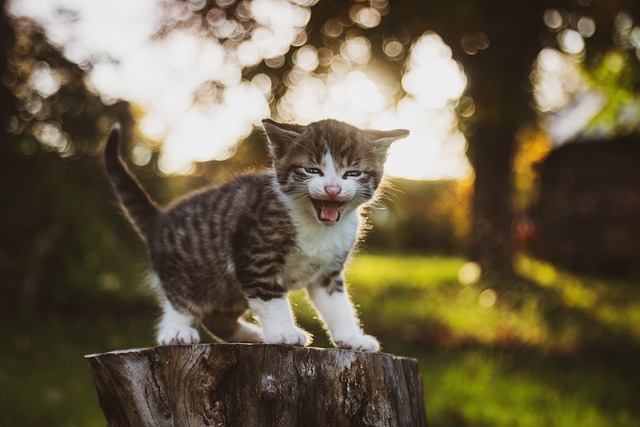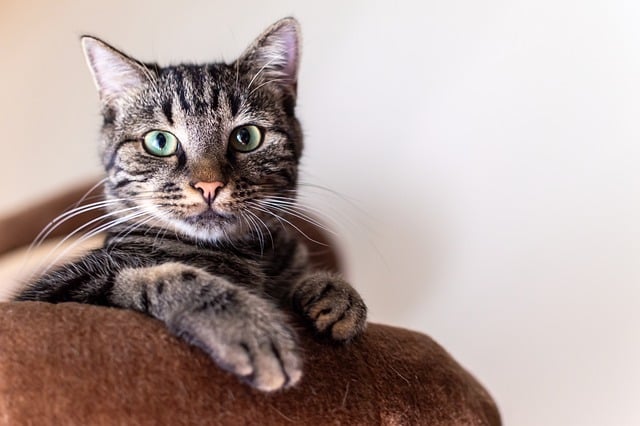The best litter box for training kittens is one with low sides and easy entry. Kittens need a litter box that is easy to get in and out of, with low sides for easy access.
Training your kitten to use the litter box can be a challenge, but the right litter box can make all the difference. There are many types of litter boxes available, from traditional open boxes to covered boxes with doors.
It is important to choose a litter box that your kitten will be comfortable using and that will make it easy for you to clean up after them. We will explore some of the best litter boxes for training kittens and provide tips for successful litter box training.
What Is Kitten Litter Training
Importance Of Early Litter Training
Kittens require early litter training for proper behaviour development.
Goals For Successful Litter Training
The key goals of litter training include establishing good habits and preventing accidents.
Types Of Litter Boxes
When it comes to training kittens, choosing the right litter box is crucial. There are several types of litter boxes available, each with its benefits and features. Understanding the different types can help you choose the best one for your kitten’s training needs.
Traditional Litter Boxes
Traditional litter boxes are the most common and affordable option. They are usually rectangular in shape and come in various sizes. These boxes require manual scooping and cleaning, but they are simple and easy to use. They are a good choice for kittens who are just starting their litter training.
Self-cleaning Litter Boxes
Self-cleaning litter boxes are a convenient option for busy cat owners. These boxes use sensors to detect when a cat has used the litter box and automatically scoop the waste into a separate compartment. This reduces the frequency of manual cleaning and helps keep the litter box odour-free. Self-cleaning litter boxes can be a great choice for households with multiple cats or for owners with limited time for daily maintenance.
Hidden Litter Boxes
Hidden litter boxes are designed to blend in with home decor, providing a discreet and stylish solution for cat owners. These boxes are often disguised as furniture, such as benches or cabinets, and offer privacy for the cat while keeping the litter box out of sight. Hidden litter boxes can be a good choice for kittens who are shy or easily startled, as they provide a quiet and secluded space for them to use the litter box.
Choosing The Right Size
When it comes to training kittens, choosing the right size litter box is crucial for their comfort and success in using it. Considerations for Kitten Size and the Growth Factor play a significant role in ensuring that the litter box is suitable for your kitten’s needs.
Considerations For Kitten Size
Kittens grow rapidly during their first few months, so it’s essential to consider their current size and anticipate their future growth when selecting a litter box. Choosing a litter box that accommodates their current size while allowing room for growth can prevent the need for frequent replacements as the kitten grows.
The Growth Factor
Understanding the growth factor of kittens is crucial in selecting the right size litter box. Anticipating the growth of your kitten and choosing a litter box that can accommodate their increasing size will prevent discomfort and encourage consistent litter box usage.
Features To Look For
When choosing a litter box for training kittens, it’s essential to consider specific features that will facilitate the training process and ensure your kitten’s comfort and hygiene. Here are some key aspects to look for:
Ease Of Access For Kittens

- Low entry height: Kittens may struggle with high-sided litter boxes, so opt for one with a low entry point for easy access.
- Spacious interior: Ensure the litter box is roomy enough for kittens to move around comfortably and dig without feeling cramped.
- Open design: A litter box with an open-top or large opening allows kittens to enter and exit easily, promoting a stress-free environment.
Materials And Durability

- Sturdy construction: Choose a litter box made of durable materials like plastic or metal to withstand scratching and wear over time.
- Easy to clean: Opt for a litter box with smooth surfaces and removable liners or trays for effortless cleaning and maintenance.
- Odour control: Look for litter boxes with door-absorbing features or compatible with odour-controlling litter to keep your home smelling fresh.
Best Litter Types For Training
When it comes to training kittens, choosing the right litter type is crucial. Best Litter Types for Training play a significant role in ensuring a seamless transition for your furry friend.
Clumping Vs. Non-clumping Litter
Clumping Litter: Forms solid clumps for easy scooping and odour control.
Non-clumping Litter: Doesn’t clump but absorbs moisture effectively.
Natural And Biodegradable Options
Natural Options: Made from materials like corn, wheat, or pine for eco-friendly disposal.
Biodegradable Options: Break down naturally, reducing environmental impact.
Location And Setup
When it comes to training kittens, choosing the right litter box and setting it up in the right location is crucial. The right placement and setup can make the difference between successful litter training and ongoing accidents.
Strategic Placement
Choosing the right location for your kitten’s litter box is essential for successful training. Place the litter box in a quiet, easily accessible location. Avoid high-traffic areas or areas with loud noises that could startle your kitten. Additionally, make sure the location is well-lit to help your kitten feel safe and secure while using the litter box.
Creating A Welcoming Environment
Once you have chosen the location, it’s important to create a welcoming environment around the litter box. Ensure that the area is free from obstacles and is easily accessible for your kitten. Consider using a litter mat to catch any stray litter and help keep the area clean. Additionally, keep the litter box away from your kitten’s food and water bowls to avoid any association between the two.
Training Tips And Techniques
Kittens are adorable and playful, but they also need to learn proper litter box habits. Training them to use a litter box can be a challenging task, but with the right tips and techniques, it can be a smooth process. Here are some effective training tips and techniques to help your kitten learn the proper litter box behaviour.
Positive Reinforcement Strategies
When training kittens to use a litter box, positive reinforcement is key. This involves rewarding your kitten for using the litter box correctly. Offer praise and treats whenever your kitten uses the litter box. Positive reinforcement helps to create a positive association with the litter box and encourages your kitten to continue using it.
Dealing With Accidents
Accidents are a common part of the training process. When dealing with accidents, it’s important to remain calm and clean up the mess promptly. Use an enzyme-based cleaner to remove any odours and discourage your kitten from using the same spot again. Avoid punishment as it can create fear and anxiety in your kitten, making the training process more difficult.
Maintaining Your Litter Box
When it comes to maintaining your litter box for training kittens, cleanliness is crucial for their health and well-being. Following a proper cleaning routine and ensuring litter box hygiene is essential for a successful training experience.
Cleaning Schedules
- Establish a daily routine for scooping out waste and refreshing the litter.
- Thoroughly clean the litter box with mild soap and water weekly.
- Replace the litter entirely every 2–3 weeks to prevent odours and bacteria build-up.
Litter Box Hygiene
- Regularly check for any signs of soiling or odour and address them promptly.
- Use unscented, clumping litter that is safe for kittens and easy to clean.
- Place the litter box in a quiet and accessible location for your kitten.
Troubleshooting Common Issues
When training kittens to use a litter box, there are common issues that may arise. By understanding these challenges and implementing effective solutions, you can ensure a successful litter box training experience for your furry friend.
Kittens Avoiding The Litter Box
If your kitten is avoiding the litter box, it may be due to the type of litter or the location of the box. To address this, try using a different type of litter or moving the box to a more secluded and quiet area.
Transitioning To Adult Litter Boxes
As your kitten grows, transitioning to an adult litter box is essential. To help your kitten adjust, gradually introduce the new box alongside the old one, allowing them to get accustomed to the change at their pace.
Product Recommendations
When it comes to training kittens, choosing the right litter box is essential for their successful transition from using the litter box. Here are our top picks for the best litter boxes for training kittens.
Top Picks For Training Litter Boxes
1. Nature’s Miracle High-Sided Litter Box: This litter box is designed with high sides to prevent litter scatter and provide privacy for your kitten.
2. Petmate Booda Dome Clean Step Litter Box: With a unique design and built-in ramp, this litter box helps reduce litter tracking and keeps the area clean.
3. IRIS Top Entry Cat Litter Box: This top-entry litter box helps keep the litter inside and provides a private space for your kitten to do their business.
Frequently Asked Questions
What Is The Fastest Way To Litter Train A Kitten?
The fastest way to litter train a kitten is to provide a clean litter box in a quiet, accessible location. Place the kitten in the litter box after eating or waking up and praise them for using it. Consistency and patience are key, avoid punishment and clean accidents with an enzyme cleaner to eliminate odours.
What Is The Best Litter For Litter Box Training Kittens?
The best litter for litter box training kittens is a non-clumping, unscented litter made of natural materials like paper, wood, or corn. These litters are safe for kittens to ingest and won’t harm their delicate digestive systems. Avoid using scented litters as they can be overwhelming for kittens and deter them from using the litter box.
Do Kittens Need A Special Litter Box?
Yes, kittens need a special litter box designed for their size and accessibility. It should be low enough for them to enter easily and have a shallow, non-clumping litter to prevent ingestion. A smaller, enclosed box can also provide privacy and security for your kitten.
At What Age Are Kittens Litter Box Trained?
Kittens are typically litter box trained by around 8 weeks of age. Consistent training and providing a suitable litter box can help.
After considering the top litter box options for training kittens, it’s clear that choosing the right one is crucial for a successful transition. By understanding the needs of your kitten and considering factors such as size, accessibility, and ease of cleaning, you can ensure a positive experience for both you and your feline friend.
